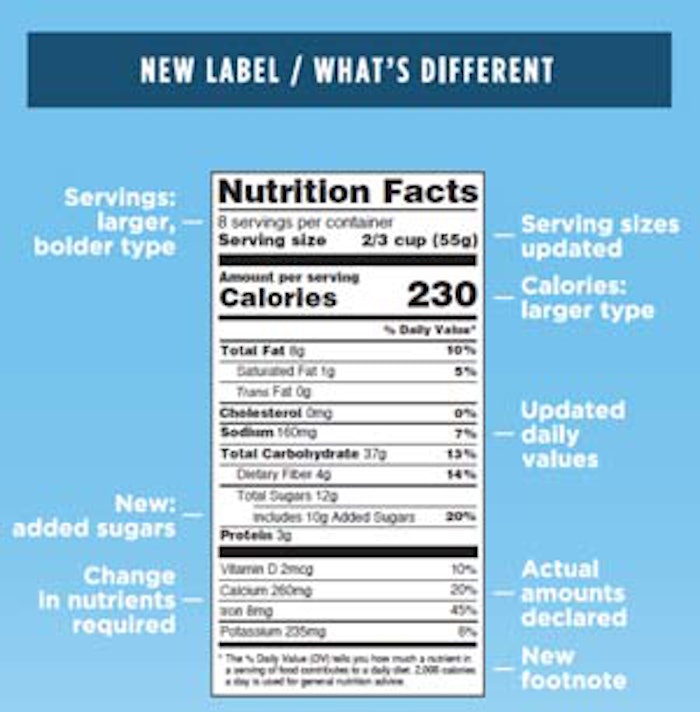
The U. S. Food and Drug Administration (FDA) has made its final changes on the Nutrition Facts Panel, and in response, the American Beverage Association has announced it will commit to offering more low- and no-calorie beverage options.
Added Sugars
As part of the change, "added sugars,” in grams and as percent Daily Value, will be included on the label.
"Scientific data shows that it is difficult to meet nutrient needs while staying within calorie limits if you consume more than 10 percent of your total daily calories from added sugar, and this is consistent with the 2015-2020 Dietary Guidelines for Americans," the FDA said.
In response to the change, the American Beverage Association said: “We believe that people should have clear and understandable nutrition facts about foods and beverages so that they can make informed choices that are right for themselves and their families. America’s beverage companies have supported nutrition transparency; it’s why we voluntarily placed clear calorie labels on the front of every bottle and can we produce in support of first lady Michelle Obama’s 'Let’s Move' campaign in 2010."
Further, it said: “We look forward to continuing our commitment to offer a wide variety of beverages – including more low- and no-calorie options and smaller portion sizes – and to engaging with the FDA to make sure consumers have the information they need.”
Other guidelines include:
- By law, serving sizes must be based on amounts of foods and beverages that people are actually eating, not what they should be eating. How much people eat and drink has changed since the previous serving size requirements were published in 1993, the FDA said. For example, the reference amount used to set a serving of ice cream was previously one-half cup but is changing to two-thirds cup. The reference amount used to set a serving of soda is changing from 8 ounces to 12 ounces.
- Package size affects what people eat, according to the FDA. So for packages that are between one and two servings, such as a 20-ounce soda or a 15-ounce can of soup, the calories and other nutrients will be required to be labeled as one serving because people typically consume it in one sitting.
- For certain products that are larger than a single serving but that could be consumed in one sitting or multiple sittings, manufacturers will have to provide “dual column” labels to indicate the amount of calories and nutrients on both a “per serving” and “per package”/“per unit” basis. Examples would be a 24-ounce bottle of soda or a pint of ice cream.
Compliance Dates
Manufacturers will need to use the new label by July 26, 2018. However, manufacturers with less than $10 million in annual food sales will have an additional year to comply.










